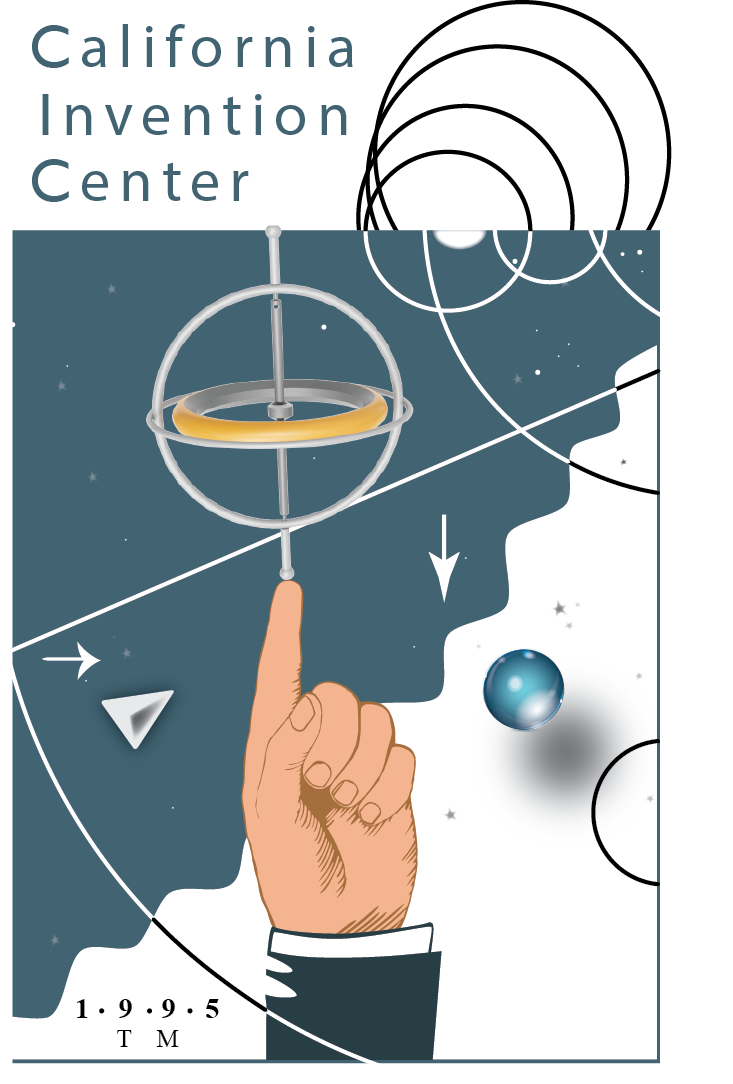Going From Idea To Inc – Turning an Invention Into a Business
Turing an invention into a business by Lawrence J.Udell
As a fixture in Silicon Valley for more than 50 years, I have helped nurture more than 40 new ventures. In keeping with the mission for the re-launched Inventors Digest, the magazine asked me to show how three inventors turned their creation into viable business. Selecting just three wasn’t easy. Then again, is creating a business from an idea scribbles on a cocktail napkin.
Although all three ideas are vastly different, they share a few common characteristics: identifiable market need, sufficient capital, and persistence.
emWave
When I first met Deborah Rozman several years ago, she told me about a fascinating new technology developed by Doc Childre at his non-profit research facility Institute of HeartMath. Deborah was executive director studying heart-brain
interaction. Their emWave device (a PC program with sensor) has the ability to not only tell you how to control your stress levels at any moment, but also how to confront the daily pressures that are both unexpected and often health debilitating. Their technology helped you shift attitude and emotional states quickly and measured
the coveted “zone” of high performance. Recognizing that this potential product had already huge markets in health and sports, they started the process of designing and building prototypes that would prove its value.
Today Deborah is president and CEO of www.quantumintech.com and has achieved success against unbelievable odds in not only proving their product’s efficacy for stress relief, health and performance enhancement (www.emwave.com),
but having their PC and portable products recognized by doctors and in such prestigious publication as the Wall Street Journal.
But don’t just take her word for it. Dr. Alan Feren, president of Fern Healthcare Insights and former chief medical officer at Sutter Health Partners, has this to say: “emWave is more than a slick piece of technology; it’s part of a revolutionary HeartMath program that is both life-af-firming and life-changing. I have used HeartMath’s freeze-Framer-and now the emWave-not only to relieve stress in the moment, but to assist in decision making under challenging circumstances, and to ‘dump all my baggage’ before going to sleep.
In this era where changes is the constant, and stress is either the foundation or the result of most of today’s disease, having an effective tool to combat the effects of stress is critical, the cool part is that everyone that sees my hand-held emWave wants to try it; this is a great ‘teaching moment’ to promote personal responsibility for one’s health using techniques and technology that are now proven to be effective.”
Duke Medical Center, Staford, Kaiser, Blue Cross Blue Shield and sutter Health, among others, are using the emWave and HeathMath systems to reduce stress, fatigue, sleep problems, and improve emotional fitness.
Supracor
I met Curtis L. Landi more than 30 years ago, when he had a service business that provided inventor with searches of paten records (remember, this was before the world of personal computers). He identified a huge potential market for a new technology that had not yet been invented, so on his kitchen table. Through countless experiments he created and started to patent a method and process for manufacturing flexible honeycomb, which prior to this was only a rigid product.
In the process, with unbelievable persistence Supracor (www.supracor.com) was born, and today provides products internationally to a diverse clientele, from Ritz-Carlton hotels to hospitals and the U.S military. Supracor is used to alleviate bed sores and can be found in equestrian products, aircraft non-flammable materials, and special infant mattresses. Curt has more than 50 patents with coverage worldwide on his technology and has proven his intellectual property value by winning a very large lawsuit against a Fortune 500 company.
He continues to invent on a daily basis, but is now supported by a research and development staff along with his large manufacturing facility in San Jose, Calif. He is truly an example of what can be done when you find a need and invent around that need to satisfy a market no one else saw.
JumpSport
Mark Publicover was a great general contractor in Saratoga Calif., until shortly after his three young children received a trampoline as a gift from their grandparents. After several fall-off accidents, he looked for some form of fall protection, but not finding any he designed and built the first affordable safety net enclosure for trampolines.
I met Mark in 1997, the very early days of JumpSport, and was introduced by a mutual friend to evaluate whether he should go into business or license his technology. The numbers were compelling: 500,000 trampolines were sold each year in the United States, there were three million existing trampolines in back yards across America, and 80 percent of all serious injuries resulted from fall-off accidents. Obviously there was a big, satisfied market for a safety enclosure. Mark had surrounded himself with a team of qualified, experienced people and had the backing
of loyal investor, so I encouraged him to go for it.
At the February 1998 Super Show, the JumpSport enclosure was voted one of
the five best products of the year and within five moths it was selling briskly at
Costco, BJ’s Wholesale, Fred Meyers, and other retailers
By 1999, low quality knockoffs began displacing JumpSport at the major retailers. The company shifted production overseas to compete, but margins continued to fall. In 200 Mark responded by creating a new line of patented, safety-enhanced-trampolines that were sold directly online (www.jumpsort.com) and a new high-end brand, “AlleyOop Sports,” that sold through a nationwide network of small dealers. By 2002, the company was profitable. In 2006 after a 5-year battle, JumpSport successfully enforced its patent on appeal. Today the company is very successful, has a portfolio of inventive products in the works, and the inventor I met also 10 years ago is now a wealthy entrepreneur.
– Lawrence J. Udell
